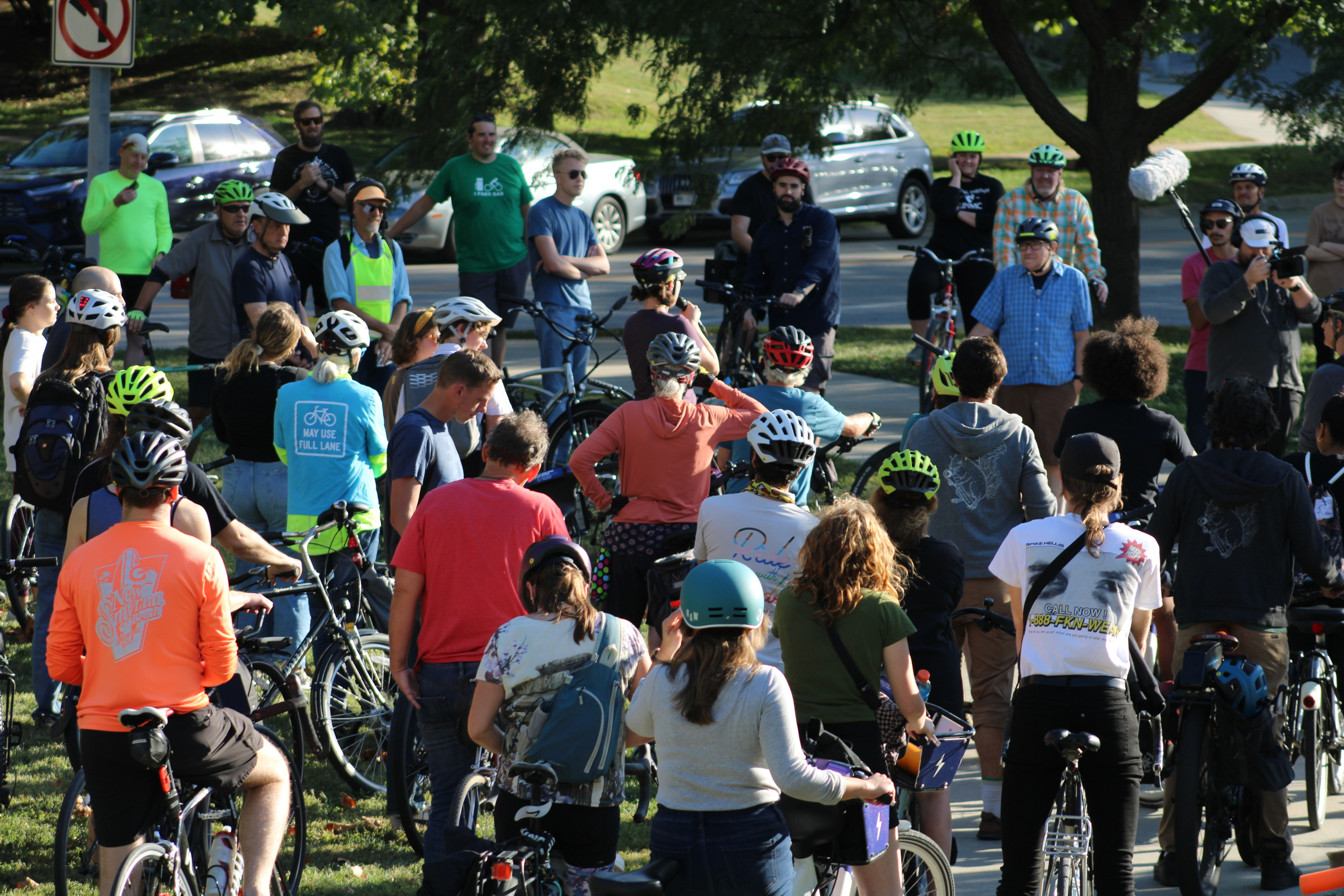Omaha Metro has two Bus Rapid Transit meetings Wednesday, June 15, 11am-1pm at the at First National Bank Winter Gardens and 4:30-6:30pm UNO Durham Science Center to give an update and to seek public input on the configuration of the BRT vehicles.
The mode share findings below highlight the need to move quickly with BRT, continue other Metro bus system improvements, and create more inviting walking and biking infrastructure, along with doing more to promote these non-single occupancy vehicle (SOV) modes to move people. Omaha’s increasing SOV trend is not sustainable monetarily, environmentally, and will negatively impact our quality of life with increased traffic and air pollution.
The American Community Survey* is an annual survey conducted by the U.S. Census Bureau. While a recent Citylab article focused on age groups and car usage across the U.S. for one year, here we highlight the trends of five modes of commuting to work in the Omaha area. Please note the boundaries and restrictions of the data include: 1) Data is from commuting to work only. Thus trips to retail, recreation, etc., are not measured in these numbers. 2) The survey only allows a person to specify one mode of commuting. Thus those who use multiple modes, and the share of each mode used, are not delineated.
Here are the percentages from 2006-2014, broken into SOV (single occupancy vehicle), Carp (car pool), Walk, Bus, and Bike:
Year 06 07 08 09 10 11 12 13 14
SOV 80.6 80.8 79.4 78.4 82.8 82.4 80.4 81.0 84.1
Carp 11.1 10.2 11.7 12.6 10.3 9.32 10.9 10.1 8.58
Walk 2.82 2.1 2.65 3.29 2.02 3.02 2.68 2.61 2.15
Bus 1.27 1.27 1.60 1.45 1.12 1.60 1.37 1.68 1.52
Bike .296 .256 .001 .216 .115 .155 .307 .248 .367
These do not add up to 100% because motorcycles, taxicabs, other means, and work at home were excluded.
What instantly grabs attention is the low (but growing) percentage of trip commutes by bicycle and relatively low percentages for transit and walking. From 2006-2013, automobiles (SOV, Carp) add up to 91% in Omaha. In 2014, they increase to 92%.
While many people celebrate Omaha’s relatively easy commute via automobile, our 91% combined use of SOV and carpooling is comparable to other areas of the country where people do NOT live in or near a principal city in a metro area. According to the Citylab article:
… the way we get to work varies widely based on where we live. Workers who live in larger, dense cities with better mass transit systems drive less than those in suburbs. Urban workers (those living in principal cities within a metro area) in 2013 were significantly less likely to commute by car (78 percent) than those living outside principal city metros (89 percent), or elsewhere (91 percent).
Because of our emphasis on car-centric transportation, Omaha has under-developed transit, walking, and bicycling commuting to work (and elsewhere) compared to other metro areas. Not having a more balanced transportation system is one of the attributes Omaha is missing in order to be seen as a full-fledged metropolitan city.
Omaha has tremendous potential to change these mode shares by investing in expanding and improving transit, walking, and biking infrastructure and actively promoting people-centric rather than auto-centric modes of movement. The BRT should help with this. As a Brookings Institution analysis of traffic congestion notes (emphasis added):
What’s important is not movement or mobility of vehicles but, rather, the accessibility the system provides for people; whether it’s getting to a job, or school, shopping, entertainment, or recreation.
Please attend one of the BRT open houses to find out more about what is happening and to be part of the process of creating a new era of transportation in Omaha.
*To access the American Community Survey, go here and then click “Expand subjects included in ACS,” then “Commuting to Work/Journey to Work,” then “refine search to Omaha, Nebraska,” then “check B08301 MEANS OF TRANSPORTATION TO WORK” for the year(s) desired, and then finally “View.” Or go here to view the raw data collected for the Omaha area.


